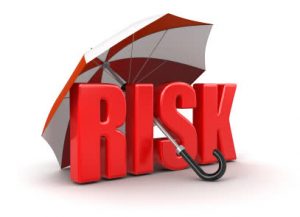Dividend Value Builder Newsletter
Types of Investment Risk
An important aspect of investing is understanding the types of investment risk and the best procedures to minimize the negative effects on a portfolio. The reason we want to explore the different types of risk is because we want to avoid the ultimate risk: a permanent loss of your capital. That is why every investor that accepts risk should have an investment risk management plan.
It is a given that an investor must take risk in order to achieve rates of return above a risk-free rate of return. Because the risk-free rate of return (i.e. Treasury Bill rate) is near zero; most investors are being forced to accept additional risk to achieve investment returns that will meet their long term goals.
What is Investment Risk?
Most of us think of risk as negative. I’m going to encourage you to think a little differently about it. Risk is a deviation of an expected outcome. In investing we can look at risk as a deviation of expected investment returns.
The deviation from the expected return can be either positive or negative. The probability and magnitude of the deviation is what an investor is concerned about. There are many factors that can affect risk and there are portfolio management tools to measure and mitigate the risk factors.
Understanding the types of investment risk allows an investor to manage risk and optimize outcomes. Let’s look at the different types of investment risk and how a portfolio manager can use the tools available to improve their probability of positive outcomes instead of negative outcomes.
Related Reading: Perceived Risk vs. Real Risk: A Key to Successful Value Investing
Three Most Important Types of Investment Risk
Market Risk
Market risk, also known as systematic risk, is risk affiliated with market returns. These can include macroeconomic factors such as interest rates, inflation, recessions, currencies, politics, etc.
In the short term stock market prices cannot be predicted. But long term returns can be predicted with some accuracy. In other words, the variation of returns (risk) is less over long periods of time than short periods of time.
Long term market returns are inversely correlated with valuations. This is why investors should use a tactical asset allocation which invests more in assets when they are selling at bargain prices and less aggressively when valuations are high. A long term investment horizon together with an active asset allocation strategy allows an investor to partially mitigate market risk.
Specific Risk
Specific risk, also known as unsystematic risk, is risk that is not correlated with market returns. It is the risk that is specific to a particular company or industry. An individual investment, such as a company, can have problems that are specific to that asset. Maybe a catastrophe (i.e. BP oil spill), bad management, a large product failure, etc. causes the individual assets price to fall. The good news is, specific risk can be nearly eliminated by diversification.
Volatility Risk
This may be the least understood and most underrated of the different types of investment risk. Did you know two different portfolios can have identical average returns but provide very different total returns? The more volatile the portfolio the lower the total return.
Very few investors match the advertised “average return” of a market index or fund because portfolio volatility eats away at your portfolio value. If you don’t understand this please read my post on portfolio volatility. It could be costing you a large portion of your retirement.
For example, if you have a negative 50% return and a positive 50% return you have an “average” return of 0%. But you have actually lost 25% of your portfolio! Very few investors realize how much their portfolio value is being affected by portfolio volatility.
Other Types of Investment Risk
Interest Rate Risk
When interest rates rise the price of bonds decline. Interest rates also affect economic activity and borrowing costs.
Default Risk
Sometimes a borrower is unable to pay back debts or bills.
Inflation Risk
Higher prices lower the purchasing power of your investments. If your investment returns don’t exceed inflation you are losing purchasing power.
Economic Risk
Economic recessions and depressions can have profound effects on asset valuations.
Reinvestment Risk
Let’s assume that many years ago you bought a Treasury Bond paying 8% that is maturing. Now the interest rate is less than 3%. If you reinvest it will have to be at a much lower rate.
Liquidity Risk
If you need to sell an investment you may not be able to find a buyer in a timely manner. Most publicly traded equity and bonds are fairly liquid. But many alternative investments such as real estate, art work, coins, stamps, etc. may experience periods when they are illiquid.
Regulatory / Political Risk
Governments have a large effect on social stability and the economic environment for investment. Look for political stability and business friendly policies.
Mitigating and Minimizing Investment Risk
Once you understand the different types of investment risk you can mitigate and minimize risk with portfolio management tools.
Continue Reading:
5 Portfolio Risk Management Strategies
Minimize Large Portfolio Drawdowns
Invest With Confidence in Less Time - Manage Your Portfolio Without Behavioral Errors

